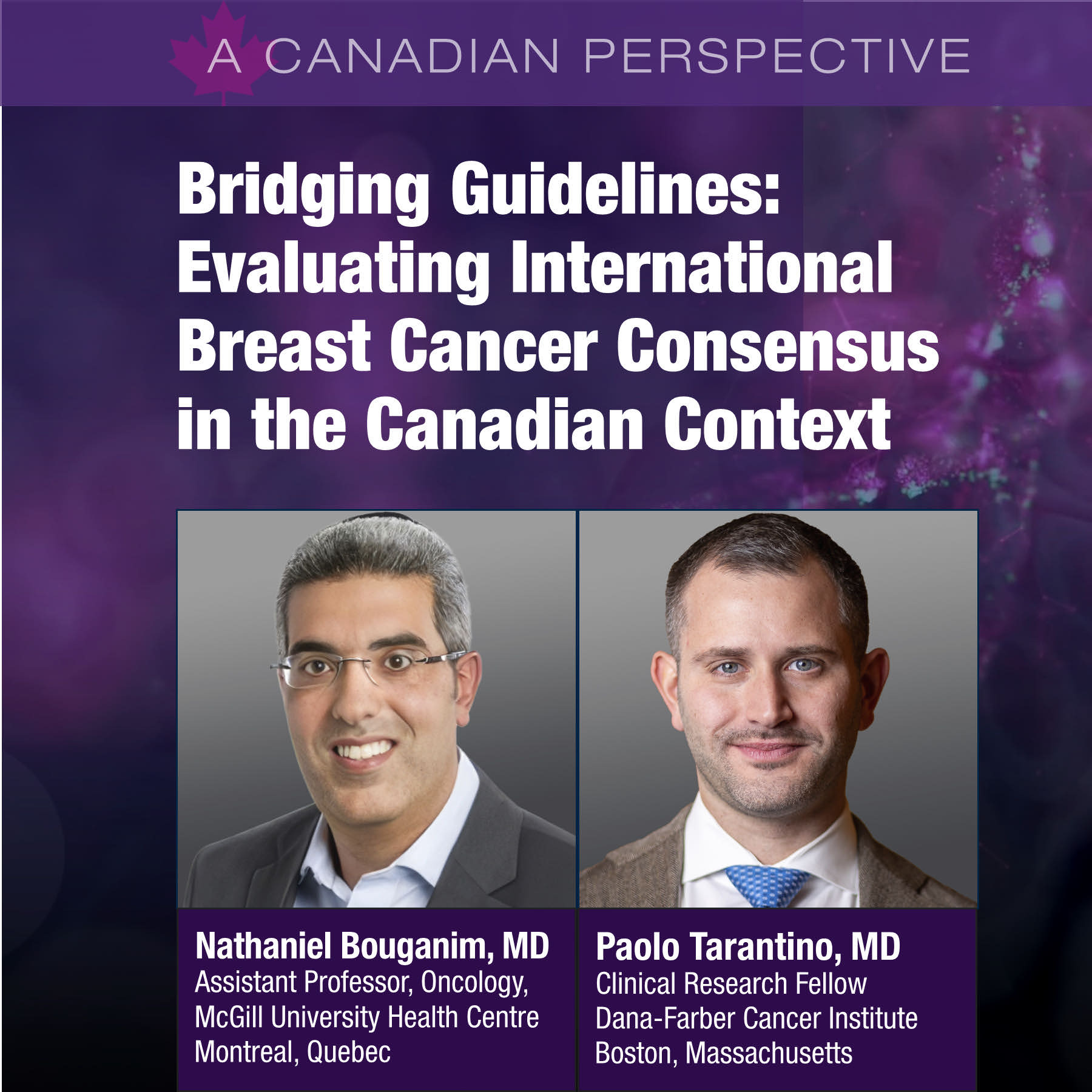
COVID-19 pandemic altering breast cancer care, with surgery deferral, revised pharmacotherapy schedules
September 2020
By Wayne Kuznar for oncoXchange
The COVID-19 outbreak has placed unprecedented pressures on healthcare systems around the world. A reduction in medical resources owing to the COVID-19 pandemic has led to the burden of accumulating untreated breast cancer and other cancers, as well as a delay in diagnosing new cancer cases.
Challenges in providing care documented worldwide
New studies being released at the European Society of Medical Oncology (ESMO) Virtual Congress 2020 reveal the impact that COVID-19 has had on the organization of patient care.
Delays and cancellation of treatments for all types of cancer, designed to minimise the risk of exposure to the coronavirus, have generated a huge backlog in oncology care, while the threat of delayed cancer diagnoses looms.
One such study highlights the extent to which COVID-19 has challenged the delivery of cancer care. Responses to a survey obtained from 109 oncology centres in 18 countries indicated that clinical activity was reduced at the peak of the pandemic in 60.9% of centres, while nearly two thirds (64.2%) cited undertreatment as a major concern. Some 37% expected to see significant reductions in clinical trials this year.
Treatment modalities that had to be canceled or delayed in more than 10% of patients at the treating centre due to the pandemic were surgery (34.0% of centres), chemotherapy (22.0%), radiotherapy (13.7%), checkpoint inhibitor therapy (9.0%), monoclonal antibodies (9.0%), and oral targeted therapy (3.7%). Treatment adaptations included a decrease in the use of double immunotherapy and a decrease in the use of corticosteroids, and increases in the use of growth factors and erythropoietin.
Specific to breast cancer, the use of everolimus was canceled or delayed in > 10% of patients at 18% of the centres, the use of CDK 4/6 inhibitors was canceled or delayed in >10% at 8.9% of centres, and the use of endocrine therapy was canceled/delayed in >10% at 2.2% of centres.
“Approximately 82% of the participants estimate that they will continue to use telemedicine more frequently also after the pandemic,” said lead investigator Guy Jerusalem, MD, PhD, from the Centre Hospitalier Universitaire Sart Tilman, Belgium. “The risk of delayed diagnosis of new cancers and economic consequences of COVID-19 on access to healthcare and cancer treatments have to be carefully evaluated.”
Another survey that gathered data from 356 cancer centres across 54 countries during April 2020 found that 88% reported facing challenges in providing care during the pandemic, with 54% and 45% reporting cases of coronavirus among their patients and staff, respectively, reported Abdul-Rahman Jazieh, MD, MPH.
While 55% of centres reduced services pre-emptively, others did so after being overwhelmed by the situation (20%) or following a shortage of personal protective equipment (19%) or staff (18%) or restricted access to medicines (9.8%). As a result, 46% of centres reported that >10% missed at least one cycle of treatment, with some estimating that up to 80% of patients were exposed to some harm.
To continue providing treatment to patients throughout the pandemic, most centres instituted some level of practice change. For example, 83.6% adapted by implementing virtual clinics and 93% by implementing virtual tumour boards, with more than half of respondents suggesting that both will continue beyond the pandemic. Centres also performed routine tests in laboratories close to patients’ homes (76%) and delivered medication to patients (68%) so that treatment could continue.
Prof. Jazieh, chairman of the Department of Oncology at King Abdulaziz Medical City in Riyadh, Saudi Arabia, said: “The detrimental impact of COVID-19 pandemic on cancer care is widespread, with varying magnitude among centres worldwide. The pandemic has impacted healthcare systems globally, interrupting care, and exposing cancer patients to significant risks of being harmed.”
In the United Kingdom, breast cancer screening and routine appointments for persons with a family history of breast cancer have been canceled, and new referrals are put on a waiting list, except for immediate BRCA mutation testing, said John Robertson, professor of surgery, University of Nottingham, Royal Derby Hospital. Telephone or Skype consultations are used when feasible.
Other changes include delaying breast reconstruction and more complicated once-plastic procedures and limiting the use of neoadjuvant chemotherapy to patients with inoperable disease (not to downstage patients before surgery).
Patients being prioritized for surgery are 1) ER-negative patients, 2) HER2-positive patients, 3) premenopausal ER-positive patients, and 4) patients currently on neoadjuvant chemotherapy whose surgery may be brought forward.
If surgery is deferred due to insufficient capacity, neoadjuvant endocrine therapy is commenced doe postmenopausal ER-positive patients, and possibly premenopausal patients as well.
Radiation therapy is being omitted for older (≥65 years) patients with invasive breast cancer if they have grade 1-2 breast cancer, tumours ≤30 mm, clear margins, are ER-positive and HER2-negative with no positive lymph nodes. Boost radiation is omsitted unless the patient is ≤40 years old, or >40 years with significant factors for local relapse. Nodal radiation therapy is being omitted for postmenopausal women who have received whole breast radiation for T1, ER-positive, HER2-negative, grade 1-2 disease with 1 or 2 micrometastases.
Adapting breast cancer treatments in the COVOD-19 era
Treatment recommendations in the COVID-19 era have been offered by David Berger-Richardson, MD, MSc, at the University of Toronto, and colleagues, and are published in Current Oncology.
“The current pandemic has led to increased use of neoadjuvant endocrine therapy,” wrote Berger-Richardson et al, as surgeries have been delayed. In patients with estrogen receptor (ER)-positive breast cancer who receive neoadjuvant chemotherapy or endocrine therapy, the use of neoadjuvant therapy can mitigate the risk of delayed surgery somewhat, “but patients have to be followed during the delay, and if they show signs of disease progression, surgery should be a priority. However, most patients can remain on neodjuvant endocrine therapy for many months with ongoing disease response.”
In patients with triple-negative breast cancer (TNBC), patients who have completed neoadjuvant neuroendocrine therapy, surgery within 8 weeks should be a priority. If surgery is delayed for patients with ER-positive TNBC, “endocrine therapy can be initiated,” and patients with HER2-positive disease can be treated with anti-HER2 therapy, with the standard being trastuzumab for 1 year. “Patients with tumours that are borderline unresectable for either breast-conserving therapy or mastectomy should be prioritized for surgery ahead of those with a radiographic complete response,” Berger-Richardson et al wrote.
When operating room resources are limited, neoadjuvant radiation can be considered for patients who experience disease progression on neoadjuvant systemic treatment or who have high-risk disease and have completed neoadjuvant chemotherapy.
Until surgical capacity increases, cancer patients could continue to be treated with neoadjuvant therapies for an indefinite period, they conclude.
Tiered criteria to prioritize breast cancer patients at Johns Hopkins
In the United States, members of the John Hopkins Women’s Malignancies Program have published their approach (Journal of Clinical Oncology) to breast cancer management during the pandemic.
Tiered criteria are used to prioritize patients with early stage (stage I-III) invasive breast cancer for surgery.
Breast conserving surgery (BCS) is recommended when possible, with contralateral procedures and reconstruction performed on a case-by-case basis after assessment of COVID-19 risk and comorbidity.
“Limitations in available surgeries may necessitate a staged approach, with BCS of the affected breast performed first and additional surgery after the pandemic,” they wrote. “If the desired reconstruction procedure is not immediately available, we consider neoadjuvant systemic therapy to allow deferral of mastectomy.”
For clinical stage II-III TNBC, the authors recommend surgery within 6 weeks of completion of neoadjuvant chemotherapy, with no additional chemotherapy if surgery needs to be delayed because of the pandemic. Instead, these patients should be prioritized for surgery.
The COVID-19 Pandemic Breast Cancer Consortium suggests up-front surgery only for T1N0 HER2-positive breast cancer, but the Johns Hopkins approach also favors up-front surgery for small T2 (≤3 cm) N0 disease, with the goal of de-escalating adjuvant systemic therapy if early stage is confirmed pathologically. If surgery reveals pathologic T1aN0 disease, adjuvant chemotherapy/HER2-targeted therapy is not recommended, given low recurrence risk.
“For individuals found to have more extensive disease after up-front surgery, we recommend standard adjuvant chemotherapy/HER2-targeted therapy with docetaxel/carboplatin/trastuzumab ± pertuzumab,” they advise.
After completion of neoadjuvant chemotherapy/HER2-targeted therapy, surgery should be performed within 6 weeks. If surgery is not available, additional cycles of HER2-targeted therapy is recommended until surgery is available.
For hormone receptor (HR)-positive breast cancer, up-front surgery, if available, is preferred for clinical stage T1-3 N0 with low-risk biologic features. If up-front surgery is not available, neoadjuvant endocrine therapy can be initiated and surgery delayed for up to 12 months.
Up-front surgery is also considered for newly diagnosed clinical stage T1-3N1 or T4N0-1 HR-positive breast cancer with low-risk biologic features, but if up-front surgery is not available, “we consider genomic profiling on the core biopsy specimen,” the authors wrote. “If genomic profiling confirms low risk, we favor neoadjuvant endocrine therapy for up to 6 to 12 months; if it indicates high risk, we consider neoadjuvant chemotherapy.”
For patients with HR-positive breast cancer with high-risk biologic features, up-front surgery is favored for clinical stage T1-3N0-1 or T4N-0 disease, but if surgery is not available, neoadjuvant therapy is recommended with genomic profiling to clarify tumor biology to aid in the choice between neoadjuvant endocrine therapy and neoadjuvant chemotherapy.
ESMO issues own prioritization criteria for breast cancer
ESMO has issued its own guidance, calling for prioritization, among others, of surgery in patients who have completed neoadjuvant chemotherapy-based treatment (or with progression of disease during neoadjuvant treatment), surgery in patients with invasive cancer for whom a multidisciplinary tumour board may decide, case by case, to proceed with up-front surgery, breast cancer surgery during pregnancy, and excision of malignant recurrence.
Radiation oncology priorities during the pandemic include palliative treatment of bleeding/painful inoperable breast mass when symptom control cannot be achieved pharmacologically, patients already on radiation treatment, any urgent palliative radiotherapy (ie, acute spinal cord compression, symptomatic brain metastases), and adjuvant postoperative radiotherapy for high-risk breast cancer patients, such as those with inflammatory disease at diagnosis, node-positive disease, TNBC or HER2-positive breast cancer, residual disease at surgery following neoadjuvant therapy, and young age (<40 years).
Specific ESMO recommendations call for neoadjuvant endocrine therapy as an option for patients with ER-positive/HER2-negative breast cancer to enable deferral of surgery by 6 to 12 months in clinical stage I or II breast cancers;
Consideration of discontinuation of adjuvant anti-HER2 therapy after 6 months instead of 12months for selected patients with HER2-positive breast cancer, and administration of chemotherapy in the neoadjuvant setting if it is being considered for a patient with ER-positive/HER2-negative breast cancer.
For patients with metastatic breast cancer, ESMO says that high priority should be given to early-line chemotherapy, endocrine therapy, targeted agents, or immune checkpoint inhibitors likely to improve outcomes, and consideration of endocrine therapy with CDK 4-6 inhibitors in ER-positive/HER2-negative breast cancer, and chemotherapy plus atezolizumab in PD-L1-positive TNBC.
When chemotherapy is recommended, oral treatments are preferred to reduce access to the hospital, and schedules may be modified to reduce the number of clinical visits. Use of long-acting LH-RH analogues can reduce the number of patient visits; consider home administration, and bone-directed therapies when indicated should be delivered at minimal hospital access.

Comments (0)